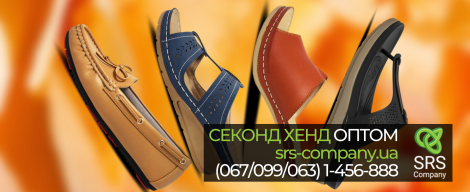 />
/>
Before we talk about second-hand shoes, let's go back in time. The history of shoes has more than one millennium. It is difficult for a modern person to imagine his life without shoes. But once upon a time, thousands of years ago, ancient people walked barefoot. Adapting gradually to their climatic conditions, they began to protect their feet, some from hot hot sand, some from snow. According to scientists, the materials from which the first shoes were made were different: animal skins, plant leaves, tree bark, reeds. With the development of man himself, shoes have improved more and more.
The ancient Egyptians wore sandals of palm leaves, wound to the leg with leather straps. In hot climates, the foot should “breathe” and protect the sole from the hot sand at the same time. Moreover, different classes of citizens wore different shoes. Commoners wore simple, primitively made sandals, and people of a wealthier class wore shoes decorated with embroidery or precious stones.
In ancient Greece, shoe-making craftsmen went further. They made not only sandals, but also endormises - boots without socks and women's boots with lacing, which were sewn exactly on the leg. Such shoes beautifully emphasized the harmony of the legs of its owner.
In ancient Rome they went even further. In public places it was not customary to wear sandals, so they began to make closed shoes for men and women, which differed in color. Men wore black, women wore white. On holidays, you could wear colored shoes decorated with embroidery, ribbons, brooches. Shoes showed what class the man was. Poor people wore shoes that were fastened to the leg with one strap, more affluent - four.
In Medieval prim Europe, they did not wear sandals and preferred shoes with long toes bent to the top, decorated with bells or bells. King of France Philip IV issued a decree obliging all noble people to wear such shoes. Moreover, the more noble the clan, the longer the toe of the shoe should be. When wearing such shoes, the nobility had trouble walking, because it was easy to stumble through a long curved toe. To avoid this, the tip of the sock was tied with a lace to the leg.
Similar torment ended in the 15th century. Shoes became shorter and wider, sewn to fit their feet. Men have a fashion for wide-nosed shoes. This happened thanks to the then reigning French king Charles VIII, who had six toes on his feet. For convenience, the shoemakers made shoes with wide toes on him, and all the subjects picked up this fashion.
But what about the Slavs?
The most common types of shoes of the Slavs were traditional posts, bast shoes (larches), pistons, shoes, boots. The bast shoes were woven from wood bark - bast, bast. They were common among the Eastern Slavs and their neighbors since the early Iron Age. In Ukraine, the larvae were worn mainly by peasants. The townspeople wore shoes woven from bast mixed with leather straps, and sometimes completely woven from leather straps. Such leather bast shoes could be decorated with small metal plates. The simple leather shoes of the Slavs were pistons (wrinkles, wrinkles) made of a rectangular or oval piece of leather and assembled on a leather rope and decorated with embroidery. Pistons and bast shoes were worn on footcloths or sewn pants, wrapped with leather straps around the legs in several turns or crosswise.
Sabatons (Chereviks) were worn by citizens and wealthy peasants. Chereviks were made of thin skin, composed in two layers. They looked like low, reaching to the ankles, ankle boots with wide lapels. In front, the boots ended with sharp or rounded toes and were tightened with twine in the ankle, for which vertical cuts were made.
The feudal elite wore boots (cheboty). Old Russian cheboty were knee-high, had a soft sole sewn from several layers of skin, a pointed or blunt nose. Chereviki and Cheboty were decorated with embroidery with red or yellow threads.
To be continued…..



